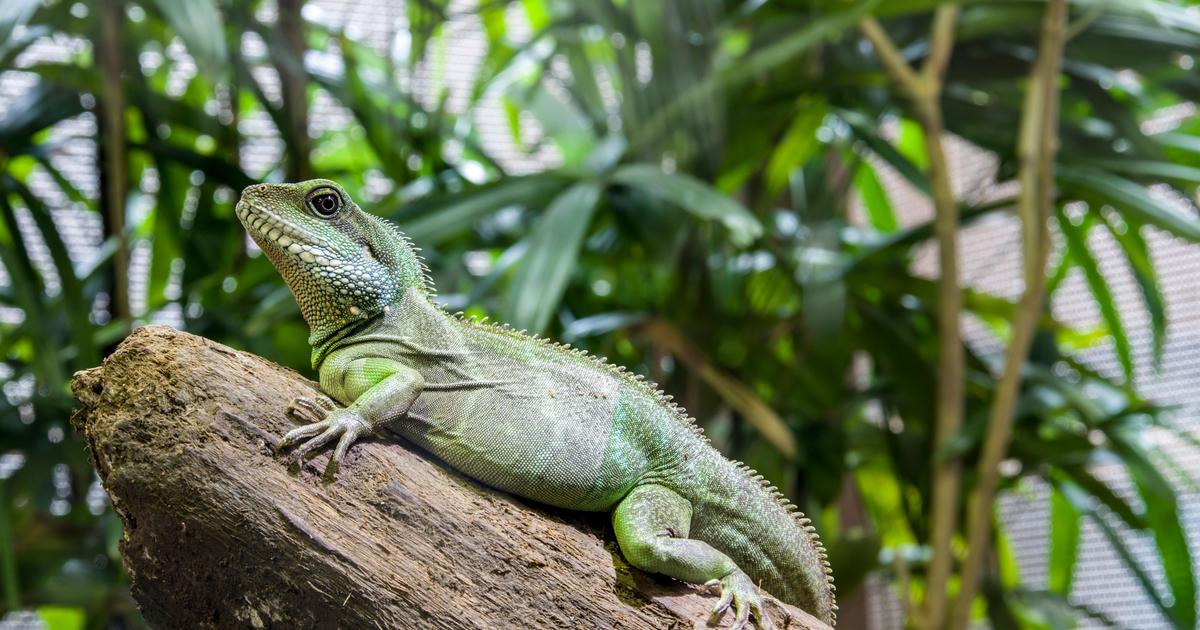The water dragon is a lizard that must be accommodated in a spacious habitat.
To discover
February: what vegetables and fruits are in season?
Origin of the water dragon
The water dragon is native to Southeast Asia.
It is found in countries like China, Cambodia, Thailand and Vietnam.
It lives in warm, humid forests and needs nearby bodies of water.
It is a diurnal animal which will prove to be quite docile once in captivity.
His particuliarity ?
It has a parietal eye, namely a photosensitive organ located on the top of the skull.
Physical Characteristics of the Water Dragon
The water dragon is easily recognized by its green skin and dark bands on its tail.
Its belly can sometimes have orange spots.
Finally, its throat is either white or brown.
Regarding dimensions, the water dragon can measure up to 1 m long as an adult!
However, its size is generally between 65 and 75 cm.
In terms of weight, males weigh 600 g and females around 350 g.
The ideal habitat for the water dragon
This small reptile thrives on the banks of waterways, whether rivers or streams.
He knows how to swim and does not hesitate to dive when he senses danger.
It is this environment that must be created when adopting it.
First, the terrarium must have small branches and plants (ivy, orchids, etc.).
A natural plant-based substrate is ideal.
You can also place peat, black soil or coconut soil.
Beyond the environment, you will need to stimulate your water dragon.
For example, hiding food under small boxes.
Good to know
If you keep your water dragon in a vivarium, be sure to mist it with lukewarm water daily to maintain a good level of humidity inside.
Water dragon diet
The water dragon appreciates insects such as locusts, grasshoppers and even crickets.
It also eats fruits (strawberries, bananas, pears, etc.) and vegetables (salad, beans, etc.).
Once installed in its terrarium, the water dragon must be fed every two days.
Once adult, your reptile will be able to eat insects, but also mealworms and other small mammals.
Be careful that the prey is not too big.
How to properly prepare for the arrival of a water dragon?
Plan a spacious terrarium that is at least 200 cm long.
Integrate a real arboreal area with plants and twigs.
A water point is essential!
The entire terrarium should be warm and humid: the temperature should be between 28 and 30°C.
A mister and a thermostat are among the first purchases.
On the food side, find out about supplies.
You will need edible insects, plants and fruits.
In captivity, a water dragon can live up to 10 years.
Its adoption requires a real daily investment!
Do not hesitate to seek advice from specialists.
Adopting an animal commits you, it is a decision that you will have to think carefully about. Do not hesitate to contact a veterinarian or the shelter closest to you before starting. They will be able to give you their advice on the animal that will suit you best.

